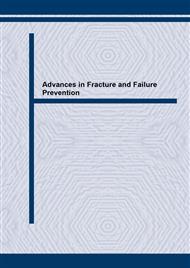p.465
p.471
p.477
p.483
p.489
p.495
p.501
p.507
p.513
Reliability Analysis in Flip Chip Package under Thermal Cycling
Abstract:
The material properties of underfill and substrate in flip chip package have temperature-dependent and moisture-sensitive characteristics. During the solder reflow process, the CTE mismatch in the package causes thermal stresses, which may reduce the reliability of the flip chip package. The package reliability can be improved by varying the die thickness, the fillet angle and the thickness of the underfill and by changing the underfill material. In this paper, the temperature- dependent properties of the underfill were established first. The flip chip reliability was then analyzed by finite element code ANSYS. Both underfill A and underfill B were used in the analysis. The results show that better reliability of the flip chip package was obtained for underfill A, for larger fillet angle of the underfill, for thinner die in the package, and for larger Young's modulus of underfill with linear elastic assumption. Also a hygrothermal preconditioning before thermal cycling reduces the reliability of the flip chip package.
Info:
Periodical:
Pages:
489-494
Citation:
Online since:
April 2004
Authors:
Price:
Сopyright:
© 2004 Trans Tech Publications Ltd. All Rights Reserved
Share:
Citation:


